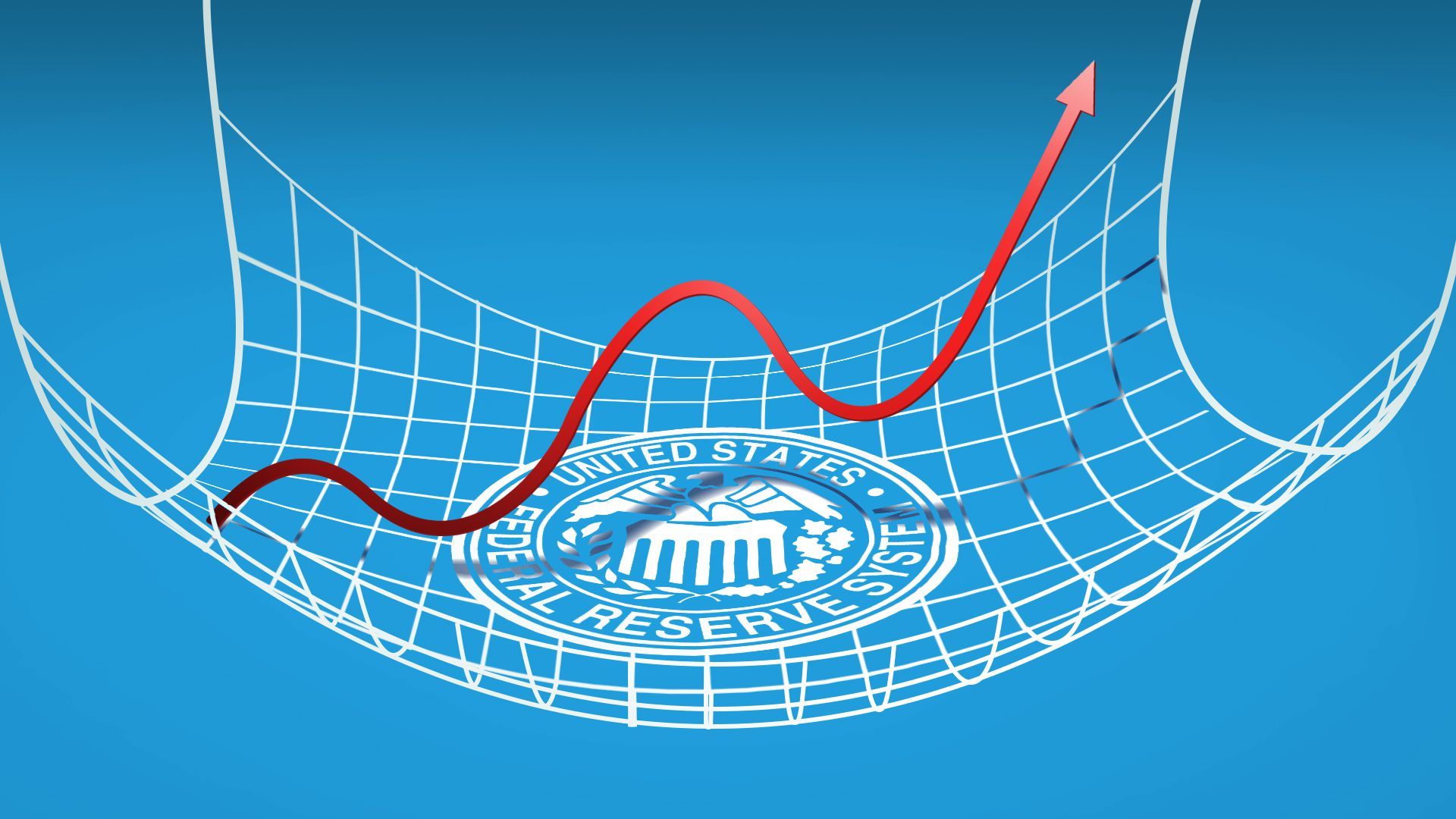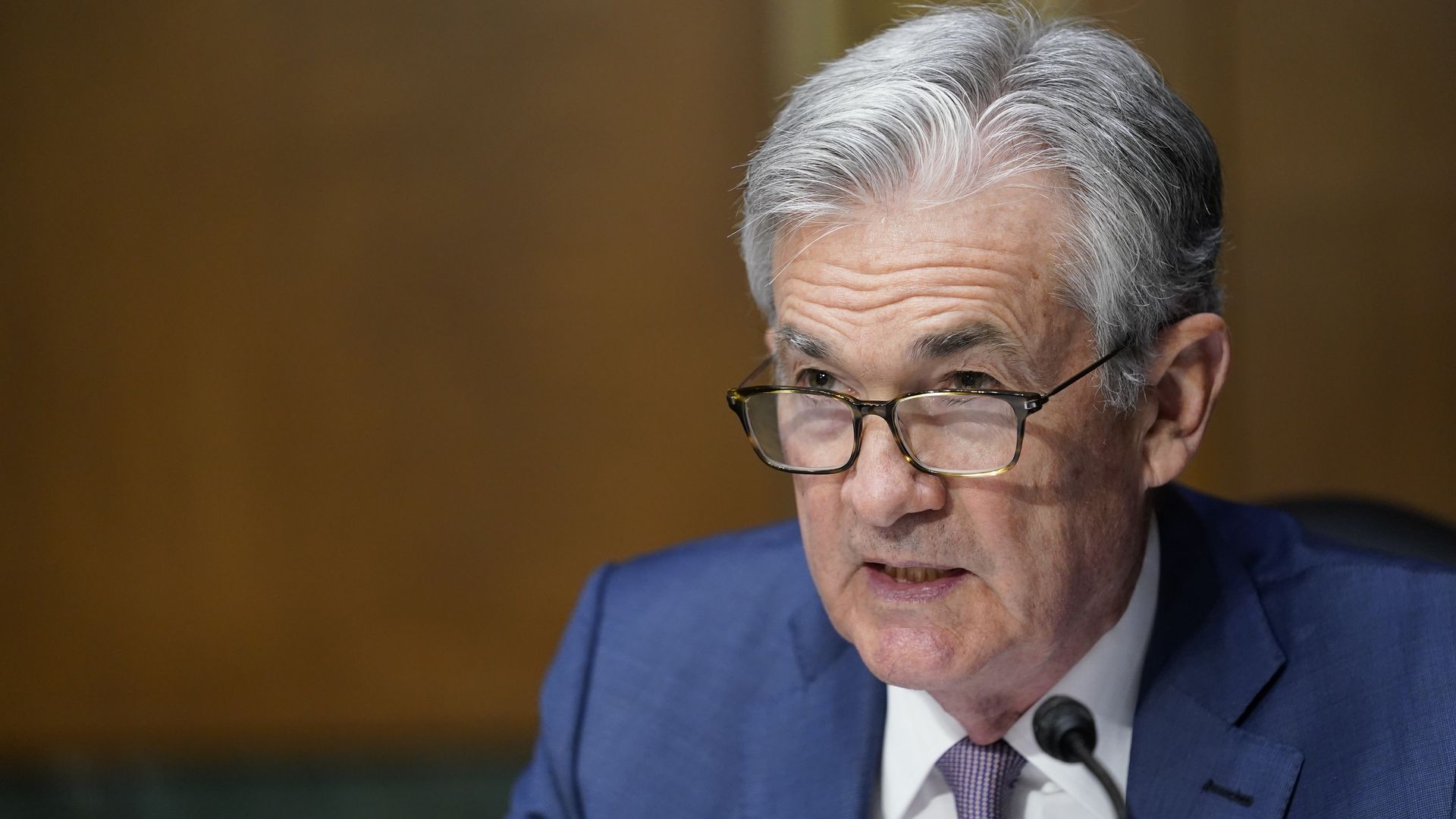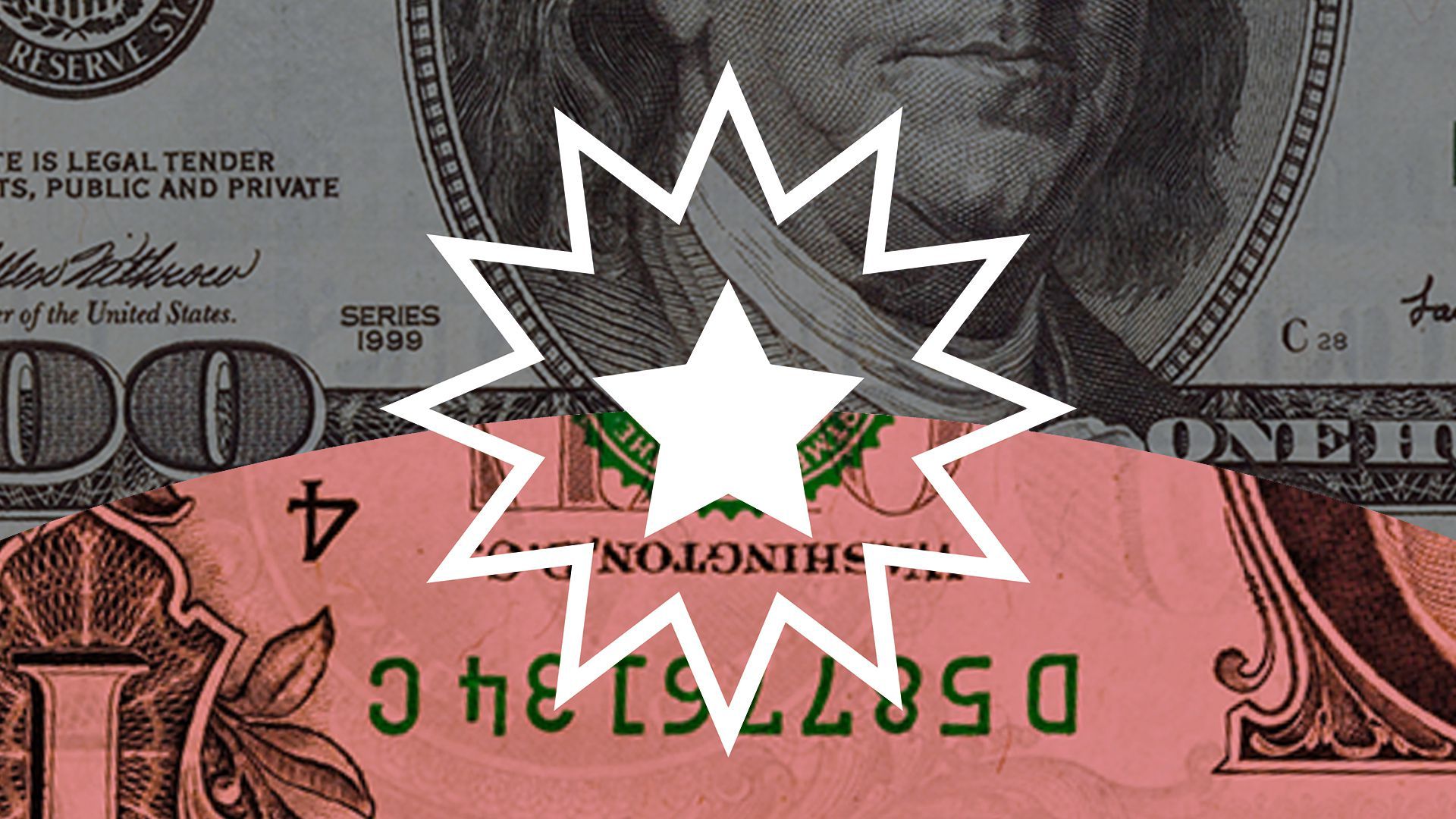| | | | | | | Presented By Northern Trust | | | | Axios Markets | | By Aja Whitaker-Moore ·Jun 18, 2021 | | We made it to Friday! 🥳 (Today's Smart Brevity count: 1,290 words, 5 minutes.) 🚨Situational Awareness: Most federal agencies' offices, including the Federal Reserve Board, will be closed today to commemorate our newest federal holiday. Juneteenth commemorates when the last enslaved people in Texas learned about their freedom under the Emancipation Proclamation in 1865. | | | | | | 1 big thing: Fear is transitory |  | | | Illustration: Annelise Capossela/Axios | | | | Although the U.S. economy is well into a recovery from the depths of the COVID-19 crisis, there's been plenty of news along the way that could have battered markets or led to a more sustained correction. But so far, that hasn't happened, writes Axios' Kate Marino. Why it matters: The equity market still has almost blind faith that the Federal Reserve will bail it out in a time of crisis, and, increasingly in the belief that the current bout of inflation will be largely temporary. "Now we just see flashes of fear, and then it goes away. There's just so much reassurance coming from the Fed," Kristina Hooper, chief global market strategist at Invesco, tells Axios. State of play: Wednesday's market shocks from the big reveal that the Fed might raise rates earlier than expected — in 2023 — have already been somewhat absorbed. The big picture: In the last few months, the market has shrugged off disappointing jobs reports, surprisingly high inflation growth, and a hard-to-understand labor market imbalance. - The longest string of down days in the S&P 500 this year was one five-day period, beginning Feb. 16, according to S&P Global Market Intelligence. At the time, investors were beginning to price in stronger and faster inflation.
- The S&P is up 14% for the year so far.
Yes, but: Economists and analysts continue to underestimate some of the risks to the recovery, particularly noticeable with the missed consensus in recent jobs and inflation data, Hans Mikkelsen, credit strategist at BofA, tells Axios (h/t to a recent BofA report by Mikkelsen, opining that fear is transitory, for the turn of phrase). - "I think we're underestimating inflation. And I think we are underestimating how quickly the Fed is going to change its tone," Mikkelsen said in an interview on Wednesday — even before the Fed's latest forecasts came out.
The bottom line: Though markets still have broad support from the Fed, watch for volatility in the next few months since estimating the pace of the recovery has proven difficult, Mikkelsen says. |     | | | | | | 2. Catch up quick | | Lordstown Motors says it has no binding orders for its electric pickup truck, days after executives claimed the company had locked-in orders. (Reuters) The Small Business Administration has left many entrepreneurs that sought COVID relief in limbo after the staff was overwhelmed with loan applications. (WSJ) The Chinese government is moving toward eliminating birth restrictions altogether, as the country's economic growth slows and its population ages. (WSJ) |     | | | | | | 3. Powell on the labor market |  | | | Photo: Susan Walsh/Getty Images | | | | In the fog of all the takes on the Fed's rate liftoff timeline this week, chair Jerome Powell's view of the labor market got relatively little attention, Kate writes. The big picture: At Wednesday's press conference, Powell continued to express confidence in strong employment growth throughout the rest of the year — along with a dose of humility about the forecasting. Why it matters: The apparent mismatch between available jobs and unemployed Americans has perplexed analysts and investors over the last few months. And full employment is one of the guiding lights underpinning any Fed policy moves. State of play: "I am confident that we're on a path to a very strong labor market — a labor market that shows low unemployment, high participation and rising wages for people across the spectrum," Powell said on Wednesday. Go deeper: Powell highlighted a few things clouding the current picture. - Retirements. "We've seen a significant number of people retire. And so, we don't actually know exactly what labor force participation will be as we go forward."
- Job switching. "The act of going back to one's old job, that's already happened. So, this is a question of people finding a new job. And that's just a process that takes longer — there may be something of a speed limit on it."
Powell also highlighted the oft-mentioned themes of lack of childcare, fear of COVID and unemployment insurance as factors keeping some on the sidelines. The Fed forecasts that U.S. unemployment will fall to 4.5% by the end of the year — it's currently 5.8% — and to 3.8% next year. That's basically unchanged from its projections in March. Yes, but: "This is an extraordinarily unusual time, and we really don't have a template," Powell said. "We have to be humble about our ability to understand the data. It's not a time to try to reach hard conclusions." Go deeper with Axios' Hans Nichols on Powell's second-term audition. |     | | | | | | A message from Northern Trust | | How to navigate possible tax policy changes | | |  | | | | There is much uncertainty and speculation surrounding the ultimate form of tax policy changes announced by the Biden Administration. Gain insight at the intersection of changing tax policy and managing complex wealth from The Northern Trust Institute. Ready for reform? | | | | | | 4. Get ready to pay more rent |  Data: Zillow; Chart: Danielle Alberti/Axios Americans who feel priced out of the surging housing market have until now been able to take solace in one thing: if they can't buy, at least they can rent. But that might be changing, writes Axios' Felix Salmon. Why it matters: Rents have been growing fast enough to keep investors happy in the face of a major pandemic, but not — yet — so much as to become unaffordable. Rent increases average about 2.5% per year in multifamily units, per Yardi Matrix, while Zillow shows rents nationally up 1.5% from a year ago. By the numbers: Big cities continue to do the best at keeping rent increases low or even negative. Over the past two years, rents in New York have declined by 9.3% to $2,530 per month on average, while San Francisco is down 9% to $2,878. - Even cities with major housing booms have seen relatively small rent increases. Austin rents are up 2.5% to $1,489 over the past two years, per Zillow, even as its house prices have risen 30.6%; Los Angeles rents are up 1.7% while its home prices have risen 16.5%.
Yes, but: The era of subdued rent increases might be coming to an end. Realtor.com's May rental report shows rents up 7.5% over the past two years, and accelerating rapidly, with larger homes increasing at a faster pace than smaller apartments. - That suggests the other shoe dropping — higher house prices finally showing up in higher rents as of May.
The bottom line: The dire housing shortage will inevitably be felt in rental prices, even if house prices are more volatile. But with houses starting to get out of reach, renting is likely to remain the cheaper option in many big markets for the foreseeable future. |     | | | | | | 5. Report: The enduring wealth gap |  | | | Illustration: Annelise Capossela/Axios | | | | As we prepare for tomorrow's federal Juneteenth holiday, commemorating the emancipation of enslaved Americans in Texas, our economy remains marred by the legacy of slavery and subsequent discrimination, writes Axios' Dan Primack and Naomi Shavin. The big picture: The legacy of slavery is particularly evident in the enduring wealth gap between Black and white Americans, and in how Black Americans broadly participate in the U.S. economy. Inside the numbers: The median annual wage for Black workers is 30% lower than it is for white workers, according to a new report from the McKinsey Global Institute and its Institute for Black Economic Mobility. Were wages to be equal, Black Americans would have around $220 billion of additional income each year. - McKinsey's Shelley Stewart III, who leads the Institute for Black Economic Mobility, tells the Axios Re:Cap podcast, in an episode airing later today: "We looked at Black Americans as residents. We looked at Black Americans as workers to understand representation and wage gaps. We looked at Black Americans as business owners, as savers and investors, and finally as consumers."
- In each case, there was a significant financial gap between Black and white Americans, built on decades of discrimination across generations, to the persistent detriment of Black economy stability, mobility and sustainability.
The bottom line: The report argues that both the public and private sectors have intersecting roles to play in closing the wealth gap and addressing other structural inequities. |     | | | | | | A message from Northern Trust | | State of the state: A relocation checklist | | |  | | | | A move across state lines requires careful planning to avoid unintended tax consequences. Review Northern Trust's checklist before relocating to a different state to understand and prepare for the financial implications of your move. Learn more. | | | | Thanks for reading. Send tips, or feedback to aja.moore@axios.com or write to me on Twitter @AjaWMoore. |  | | The tool and templates you need for more engaging team updates. | | | | | | Axios thanks our partners for supporting our newsletters. If you're interested in advertising, learn more here.
Sponsorship has no influence on editorial content. Axios, 3100 Clarendon Blvd, Suite 1300, Arlington VA 22201 | | | You received this email because you signed up for newsletters from Axios.
Change your preferences or unsubscribe here. | | | Was this email forwarded to you?
Sign up now to get Axios in your inbox. | | | | Follow Axios on social media:    | | | | | |








No comments:
Post a Comment